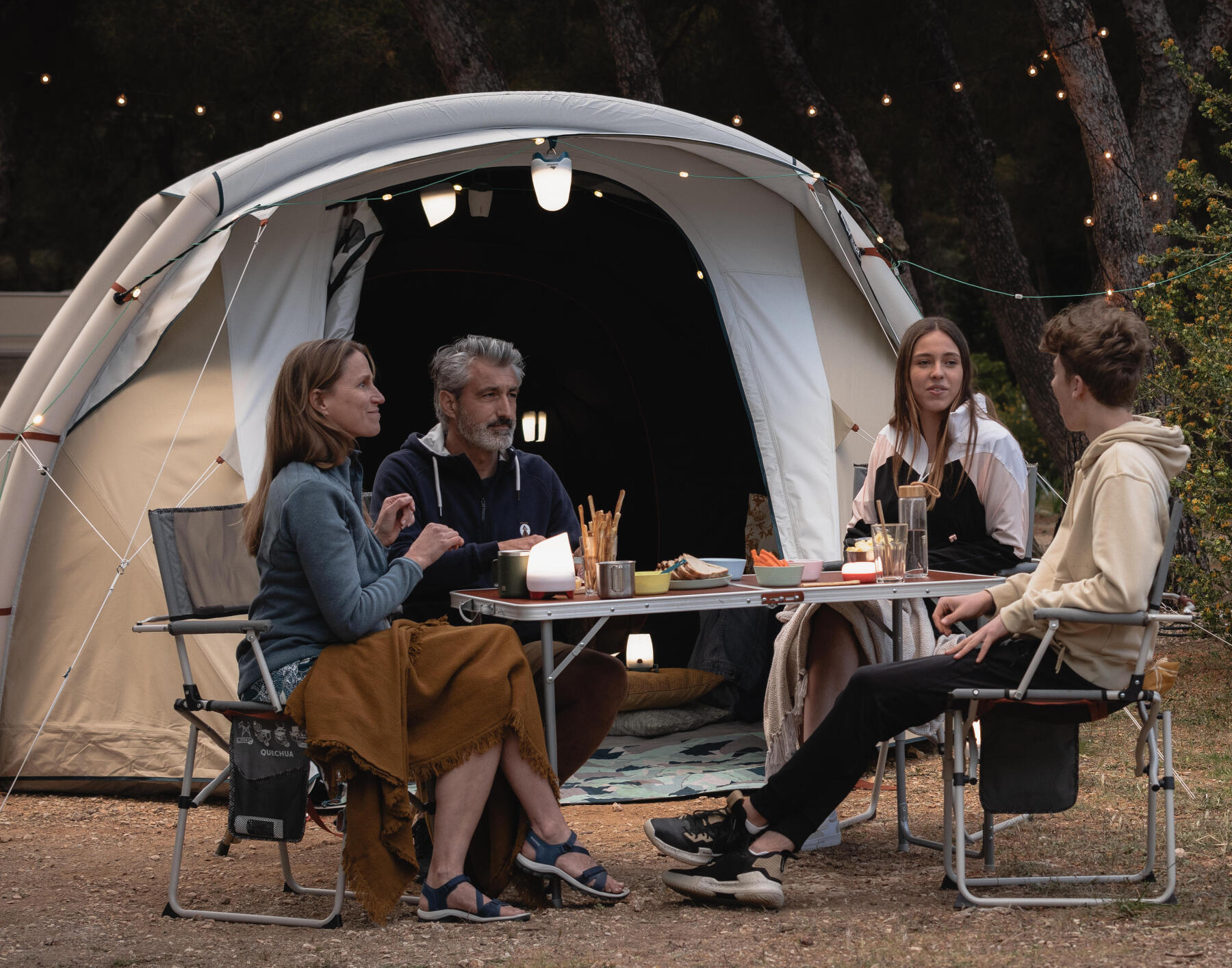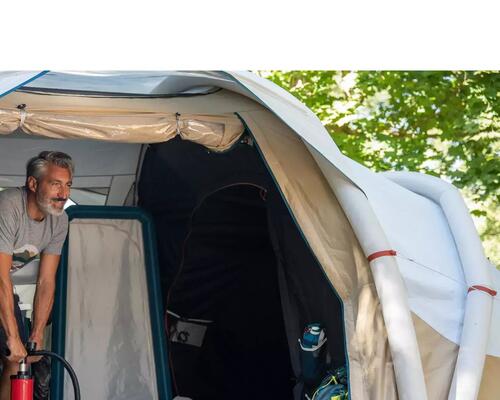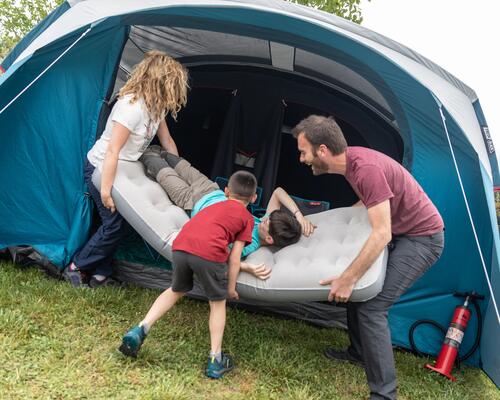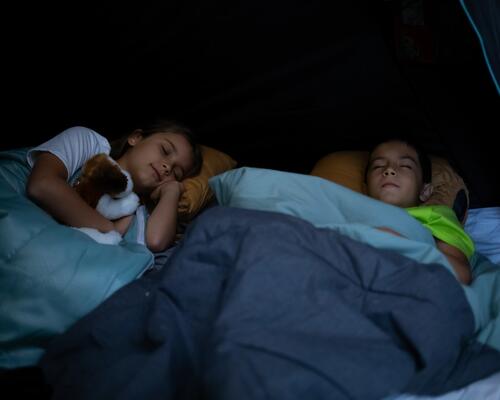Weight, a major criterion when trekking
The first criterion when choosing your mattress is weight.
In fact, if you're planning on going trekking with your mattress in your backpack, it's essential to choose a model that is as light and compact as possible. The low weight will help minimize the weight of your backpack and the compact size will reduce the amount of space taken up by the mattress. A trekking mattress also fits more easily into a bivouac tent compared to a thick, inflatable camping mattress which may rub against the tent wall. Some mattress models are, for example, narrower at the bottom to make them even more compact. And there's no need for a pump for this type of mattress. They're either made from foam or self-inflating. Everything is carefully calculated to avoid extra weight or unnecessary bulk !
Conversely, if you're going camping or are looking for a mattress for sleeping indoors, you can opt for a camping mattress where weight doesn't really matter too much. These mattresses are generally thicker, wider, and more comfortable, like a real bed! Normally they need a pump to inflate them. They are rectangular in shape and offer enough space for people who tend to move around a lot in their sleep ;). They are ideal for large camping tents. Some models are available in different widths: 70, 120 or 140 cm.

















